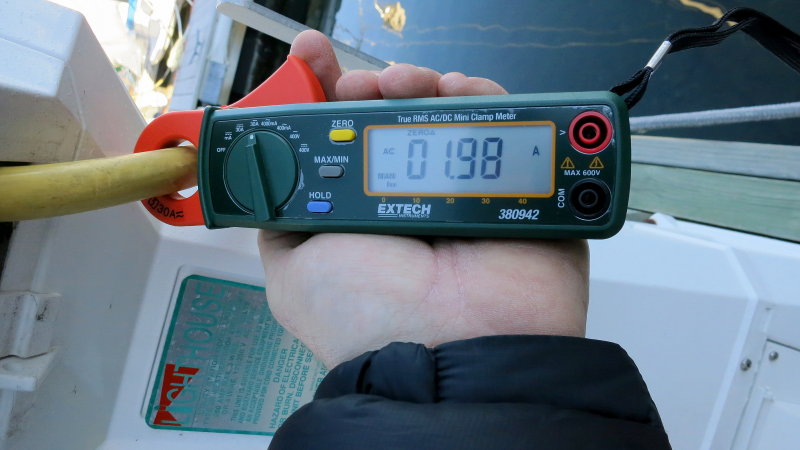Excellent tests, and certainly the easiest to do.
The down side of test #1 is that it only detects fault current that is returning via some path OTHER than the ground wire in your shore power cable. If the fault current is going back through your own ground system, which is what it's supposed to do, the current in the cable will still sum up to 0.0A. i.e. a false negative.
It's a bit harder to do, but a more thorough test can be done if you can gain access to the individual conductors for your shore power. You could make a short test cable and cut back the cable jacket to expose the wires, or you could access them from inside the boat, perhaps by the power inlet or breaker (if you have one).
Here are the tests, using the same clamp meter described by CMS:
- For 120V (30 or 50A) service, clamp around the line (black) and neutral (white) wires together. Current should be 0.0A. If not, you have a fault current.
- For 250V service, clamp around Line 1 (black), line 2 (red), and neutral (white) together. Current should be 0.0A. If not, you have a fault current.
If the first test does not read 0.0A, then clamp around just the green ground wire. If it's zero, then your fault current is returning via some path other than your ground, most likely via your thruhull bonding system. If you measure any current, then at least some of the fault current is returning through your shore grounding system. Note that fault current can be returning through both paths, so whatever you don't measure in your ground wire is going back through an alternate path.


